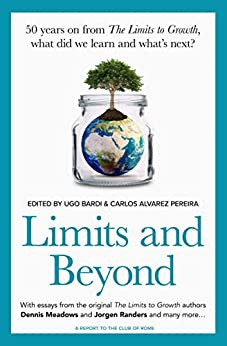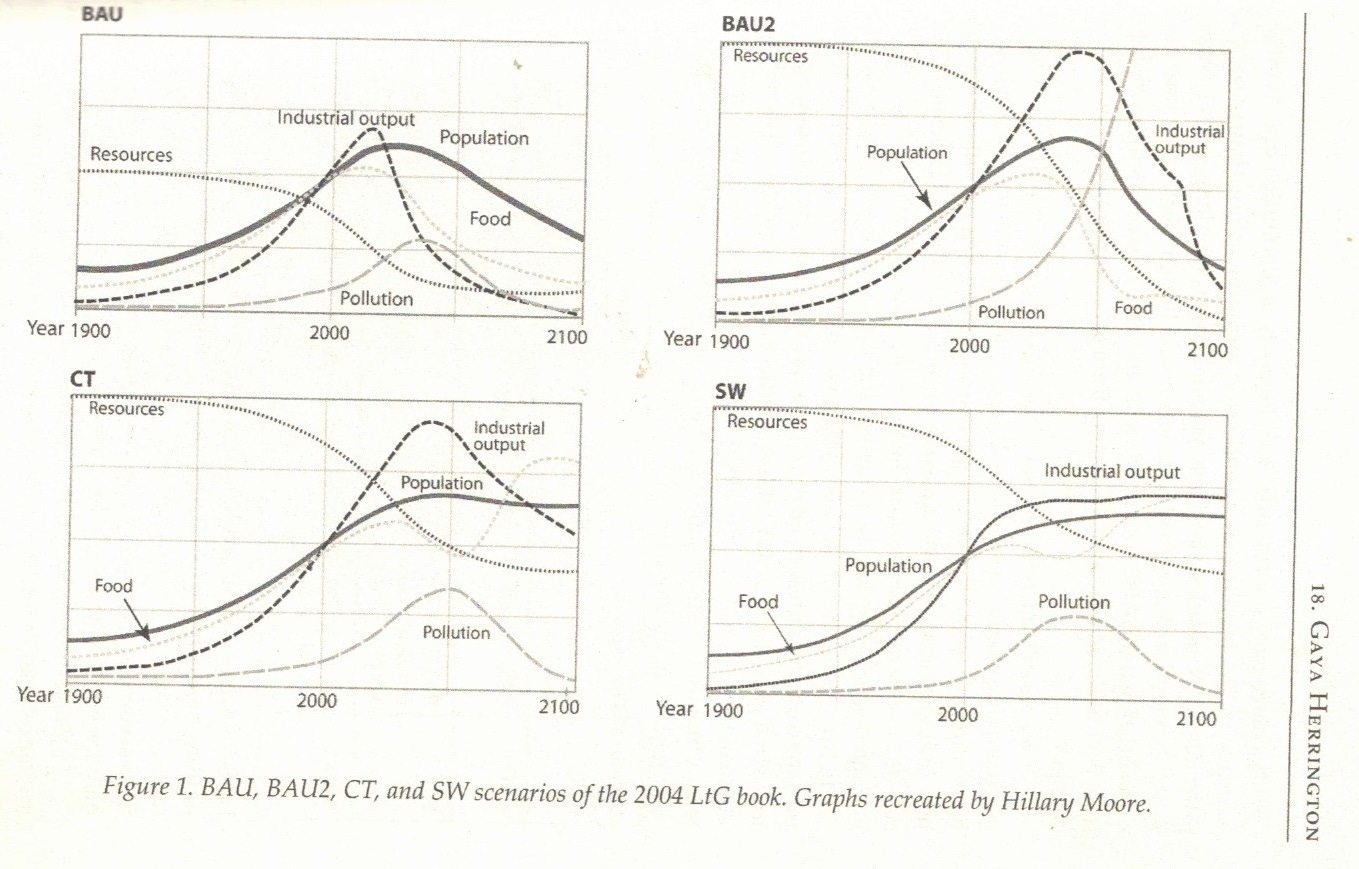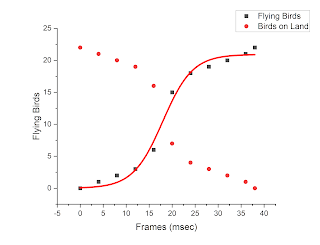
I have been posting a series of review of the recent report to the Club of Rome "Limits and Beyond." Here is a recent post by Ian Sutton on his blog, "Netzero205." Many people still think that the original work of 1972, "The Limits to Growth" was "wrong." They'll have to change their minds, sooner or later. Here is a comment on how Gaya Herrington examined how the base case scenario of the 1972 book fared in 50 years. Judge by yourself!
Chapter 18: Better Windmills
The book Limits and Beyond, edited by Ugo Bardi and Carlos Alvarez Pereira, provides a 50th anniversary review of the seminal report Limits to Growth (LtG). The following is from the back cover of the book.
50 years ago the Club of Rome commissioned a report: Limits to Growth. They told us that, on our current path, we are heading for collapse in the first half of the 21st century. This book, published in the year 2022, reviews what has happened in the intervening time period. It asks three basic questions:
Were their models right?
Why was there such a backlash?
What did the world do about it?
The book consists of 19 chapters, each written by a different author, two of whom — Dennis Meadows and Jorgen Randers — were part of the team that wrote the report.
This post is the seventh in a series that reviews chapters of the book Limits and Beyond. We look at Chapter 18: I did a data check on World3 - Here’s what I found. (Previous reviews are summarized here.)
Four Scenarios
The author of Chapter 18, Gaya Herrington, compares four scenarios from the 2004 edition of Limits to Growth with empirical data. The scenarios are:
Business as Usual (BAU).
Business as Usual 2 (BAU2). This is BAU with double the natural resources.
Comprehensive Technology (CT).
Stabilized World (SW).
She summarizes her analysis in the following four charts.
A typical example of the comparison of the LTG scenarios and Herrington's data on the real world is shown below. The complete set can be found in her thesis.
I was reminded of Ms. Herrington’s work by a short conversation with a fellow church member this week. This person understood that the climate is changing (who could not given the events of recent days). He maintained that technology — in the form of windmills — could help save us. But he also realized that windmills have their limitations. For example, they are big and ugly. So, he asked, “Why don’t they make windmills with smaller blades?” In other words, this person accepted the ‘Comprehensive Technology’ approach. (I was restrained enough not to ask that person not look out of the window where he would have seen that the wind was not blowing.)
Currently, we are on the first track: Business as Usual track (BAU). In other words, in spite of the seemingly endless number of reports warning us of our predicament, society has not acted.
Since LtG was published additional resources, such as tight oil, have been made available, and technology has advanced. So BAU2 and CT need to be evaluated since they may represent our future direction.
Regarding BAU2, Herrington says,
More abundant resources do not avoid collapse in World3 scenarios; its cause merely changes from a resource scarcity crisis to a pollution one . . . BAU2 essentially tells the story of ecosystem breakdown from accumulated pollutions, including greenhouse gases.
With respect to CT she says,
It assumes unprecedented technological innovation in a world that does not otherwise does not change priorities much. The new technologies do in fact help avoid an outright collapse. However, CT sill results in some declines because technology costs become so high that not enough resources are left for agricultural production, health, and education.
She does, however, point out that many of the assumptions that lie behind CT are highly optimistic, and are not validated by empirical data.
Humanity can innovate itself out of one limit, like to some extent it has with resource constraint. But in a system like our global society, creating a solution to one limit inevitably causes interactions with other parts of the system, sooner or later giving rise to a new limit which then becomes the new binding constraint on growth. This new constraint today is pollution from greenhouses gases.
The conclusion is straightforward. We should drive toward the Stabilized World (SW) scenario. Doing so will not only avoid collapse, it will maximize human welfare overall. In fact, we are heading toward either BAU2 or CT.
Need for Legislation
This post, like all the others in this series, repeats the conclusions that we have heard so often.
Climate science tells us that we are heading toward a calamity within the lifetime of most people reading this post.
The climate is linked with many other factors in ways that are difficult to understand or even identify. (Maybe Ms. Herrington’s most important point is that the first word in the phrase Limits to Growth is plural.)
Communication between the climate community and the world at large has been futile.
We are doing nothing effective about these looming calamities.
Therefore, we need to . . .
The many reports, books, web sites and blog posts to do with climate change generally stop at this point, or else they make sweeping statements about changing the structure of society.
I suggest that we actually need legislation to take us in the right direction. Voluntarily constraints have not worked — we need enforceable rules.
This is why the proposed Climate-disclosure rule from the U.S. Securities and Exchange Commission is so important. (Similar rules being promulgated in many other nations.) Rules may actually be welcomed by business and industry. They provide a badly needed framework and structure for designing and implementing climate programs. In other words, the rules are not designed to lock people up. They are are designed to help business and industry develop a path forward while still making a profit.
This conclusion is based partly on my experience with the development of process safety standards thirty years ago. The analogy between what happened then and what is (not) going on now in the climate world is striking.
















